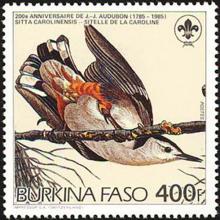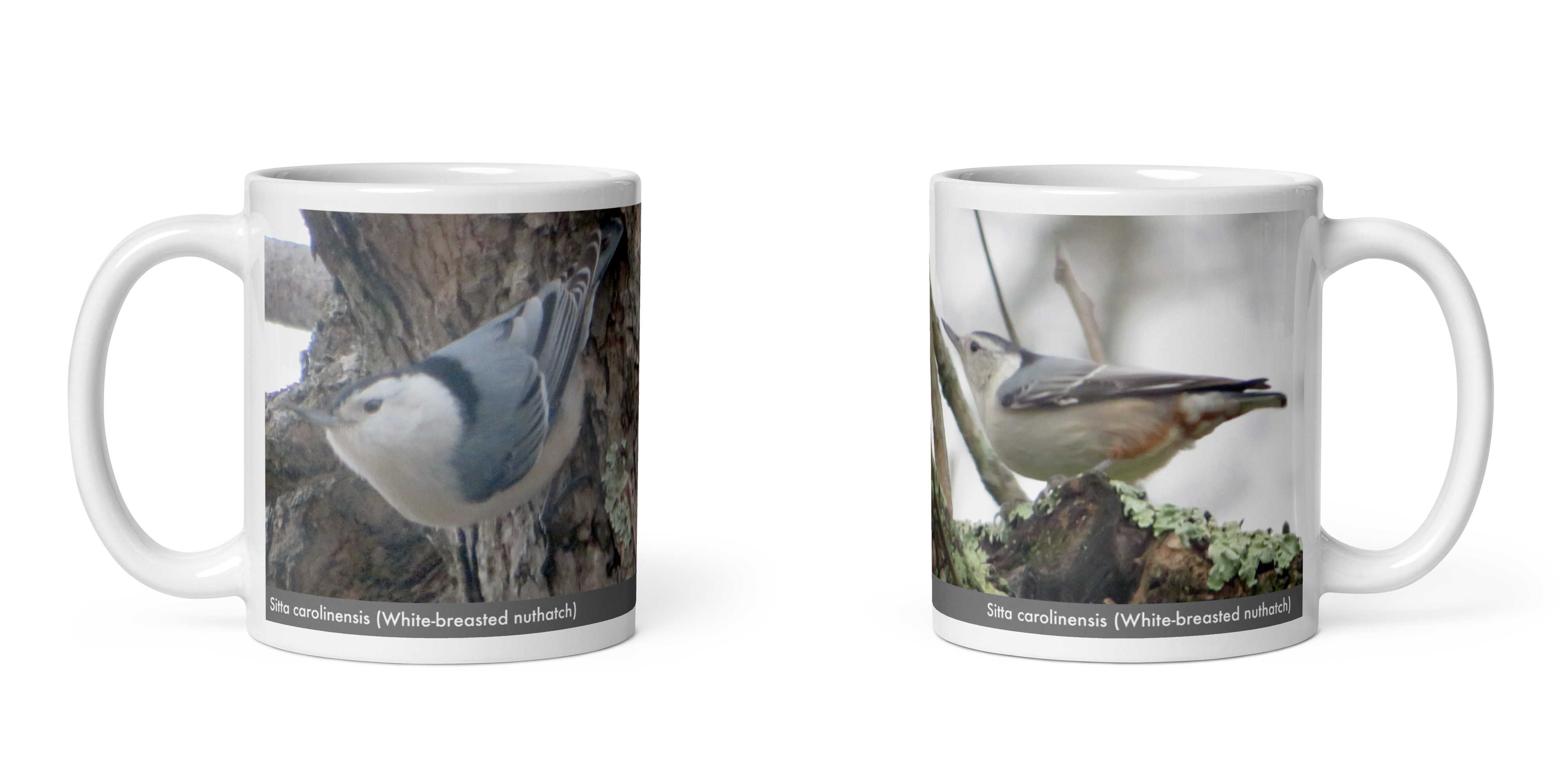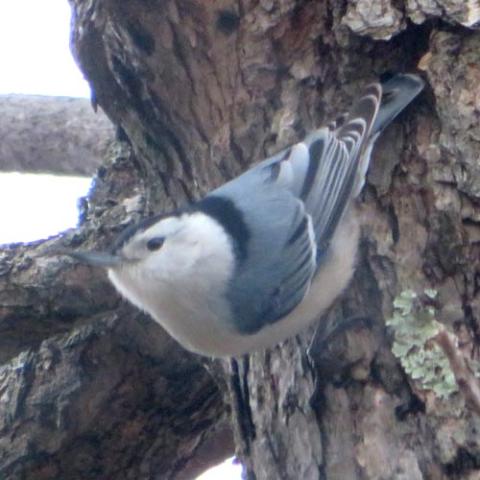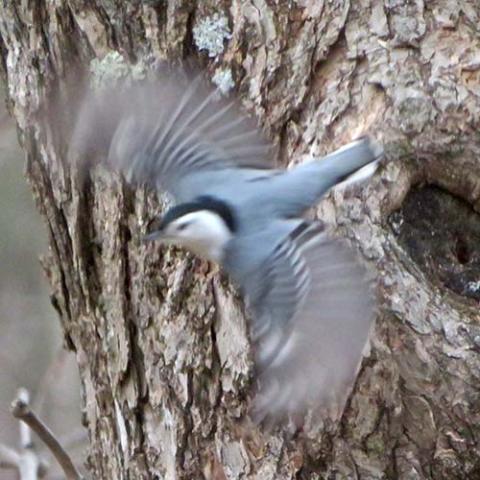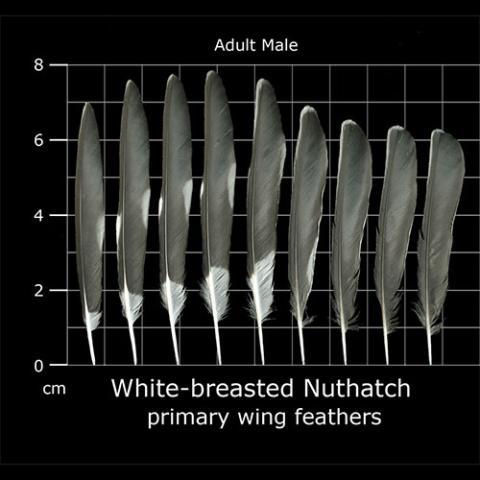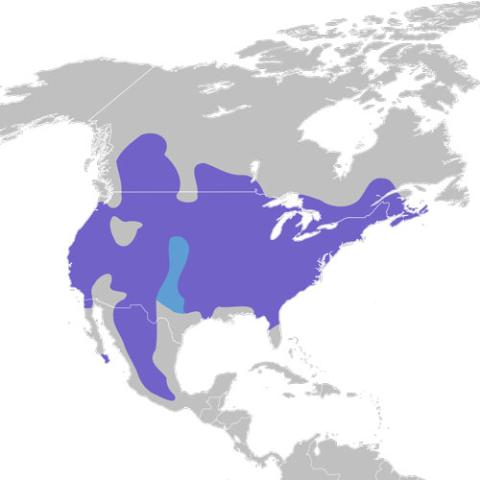The nuthatches are a genus, Sitta, of small passerine birds which derive their English name from the tendency of some species to wedge large insects or seeds into cracks, and then hack at them with their strong bills. Sitta is derived from sittē, Ancient Greek for nuthatch, and carolinensis means "of Carolina" in Latin. The white-breasted nuthatch was first described by English ornithologist John Latham in his 1790 work, the Index Ornithologicus. German ornithologist Hans Edmund Wolters proposed the division of the genus Sitta into subgenera in 1975–1982. The white-breasted nuthatch is placed in Sitta (Leptositta) (Buturlin, 1916), alongside the white-cheeked nuthatch (S. leucopsis) and Przewalski's nuthatch (S. przewalskii).
Nuthatch taxonomy is complex, with geographically separated species sometimes closely resembling each other. The white-breasted nuthatch has an appearance and contact call similar to those of the white-cheeked nuthatch, of the Himalayas and was formerly considered to be conspecific with it. A study published in 2012 showed that four distinct lineages were genetically isolated from each other and could represent different species, recognizable by morphology and song. A molecular phylogeny published in 2014 and including all main species' lineages within nuthatches concluded that the white-breasted nuthatch was more closely related to the giant nuthatch (S. magna) than to Przewalski's nuthatch, formerly regarded as possibly conspecific with it; Przewalski's nuthatch turned out to be basal in the family.
Description
The white-breasted nuthatch is a medium-sized nuthatch, measuring about 15.5 cm (6.1 in) in length. Like other members of its genus, it has a large head, short tail, short wings, a powerful bill and strong feet; it is 13–14 cm (5.1–5.5 in) long, with a wingspan of 20–27 cm (7.9–10.6 in) and a weight of 18–30 g (0.63–1.06 oz).
The adult male of the nominate subspecies, S. c. carolinensis, has pale blue-gray upperparts, a glossy black cap (crown of the head), and a black band on the upper back. The wing coverts and flight feathers are very dark gray with paler fringes, and the closed wing is pale gray and black, with a thin white wing bar. The face and the underparts are white. The outer tail feathers are black with broad diagonal white bands across the outer three feathers, a feature readily visible in flight.
The female has, on average, a narrower black back band, slightly duller upperparts and buffer underparts than the male. Her cap may be gray, but many females have black caps and cannot be reliably distinguished from the male in the field. In the northeastern United States, at least 10% of females have black caps, but the proportion rises to 40–80% in the Rocky Mountains, Mexico and the southeastern U.S. Juveniles are similar to the adult, but duller plumaged.
Three other, significantly smaller, nuthatches have ranges which overlap that of white-breasted, but none has white plumage completely surrounding the eye. Further distinctions are that the red-breasted nuthatch has a black eye line and reddish underparts, and the brown-headed and pygmy nuthatches each have a brown cap, and a white patch on the nape of the neck.
Distribution and habitat
The breeding habitat of the white-breasted nuthatch is woodland across North America, from southern Canada to northern Florida and southern Mexico. In the eastern part of its range, its preferred habitat is old-growth open deciduous or mixed forest, including orchards, parks, suburban gardens and cemeteries; it is found mainly in the lowlands, although it breeds at 1,675 m (5,495 ft) altitude in Tennessee. In the west and Mexico, the white-breasted nuthatch is found in open montane pine-oak woodlands, and nesting occurs at up to 3,200 m (10,500 ft) altitude in Nevada, California and Mexico. Pinyon-juniper and riverside woodlands may be used locally where available. The white-breasted nuthatch is the only North American nuthatch usually found in deciduous trees; red-breasted, pygmy and brown-headed nuthatches prefer pines.
The presence of mature or decaying trees with holes suitable for nesting is essential, and trees such as oak, beech and hickory are favored in the east since they also provide edible seeds. White-breasted nuthatches seldom excavate their own nest holes like red-breasted nuthatches. Although suitable habitat is distributed continentally, it is discontinuous. The separate populations of this non-migratory species have diverged to form distinct regional subspecies.
The white-breasted nuthatch, like most of its genus, is non-migratory, and the adults normally stay in their territory year-round. There may be more noticeable dispersal due to seed failure or high reproductive success in some years, and this species has occurred as a vagrant to Vancouver Island, Santa Cruz Island, and Bermuda. One bird landed on the RMS Queen Mary six hours' sailing east of New York City in October 1963.
Ecology and behavior
The white-breasted nuthatch often travels with small mixed flocks in winter. These flocks are led by titmice and chickadees, with nuthatches and downy woodpeckers as common attendant species. Participants in such flocks are thought to benefit in terms of foraging and predator avoidance. It is likely that the attendant species also access the information carried in the chickadees' calls and reduce their own level of vigilance accordingly.

